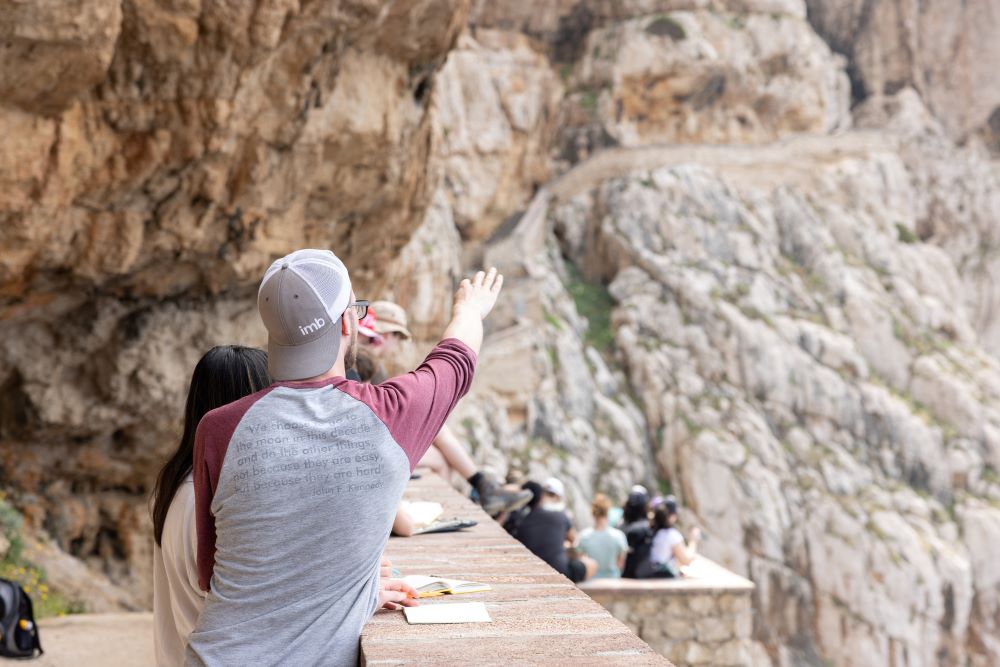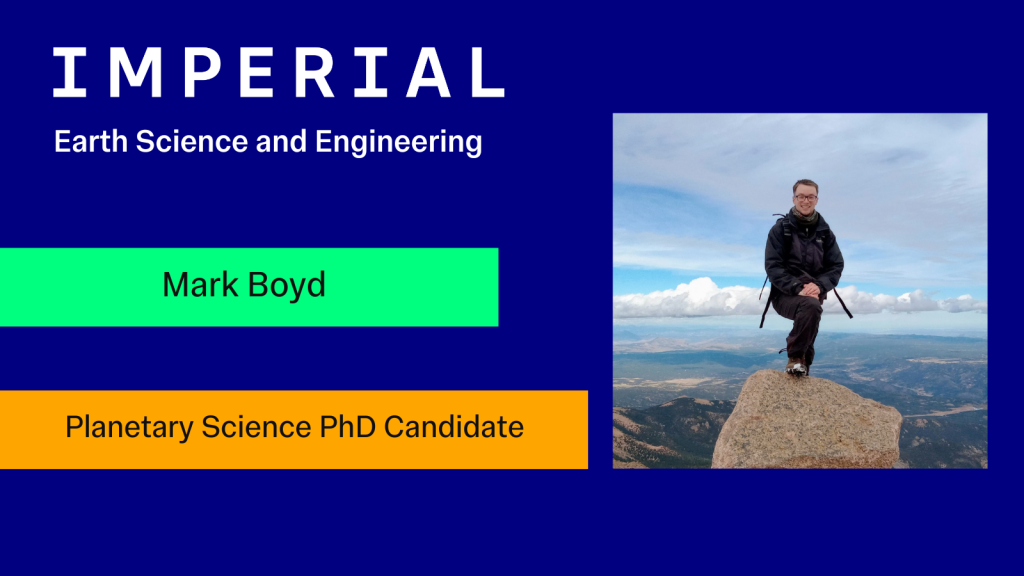Mark Boyd is a PhD candidate at the Department of Earth Science and Engineering (ESE) at Imperial. He studies tiny, spherical dust grains found in space and on Earth. These ‘microspherules’ hold clues to help us better understand ancient environments and climates.
In this ESE blog post, Mark tells us more about what inspired him to pursue his PhD and shares his hopes for the potential of his research.
Describe your PhD project in a tweet:
I study the tiny to understand the huge – micro-sized, spherical dust grains (including extra-terrestrial material called micrometeorites) that hold clues about planetary and environmental processes.
How do you see your research making an impact within and beyond academia?
Given that my research is multi-disciplinary, my hope is that my work helps to bridge various fields of study. I think this is the approach that’s needed to answer some of the questions surrounding our Earth and its place in the solar system – in particular, how various processes shape planetary evolution.
I also think space science is powerful in inspiring young people and the public. I’m committed to outreach and public engagement (including delivering planetarium shows with Imperial’s mobile dome), sharing the wonders of planetary science and what it can teach us about our changing planet.
What sparked your interest in your research area?
My undergraduate degree was in chemistry and earth science, but I’ve always loved space. When I learnt that planetary science could combine all of these, it seemed like a natural route to pursue. My grandfather, who was involved in the early days of British space science, had models of rockets and satellites on his desk. Seeing these inspired a sense of curiosity as well as awe for what can be achieved through science and engineering.
In particular, researching micrometeorites and dust grains is this hidden world around us – using the amazing analytical techniques available to us, we can reveal so many secrets about planetary evolution. The potential for learning is infinite!
Talk us through a typical day in your life as a PhD student. How do you maintain a healthy work-life balance?
Day to day, my PhD can look quite different. For anyone who’s walked past my desk, you’ve probably seen me with my head down a microscope, paintbrush in hand and headphones in (likely listening to the Lord of the Rings soundtracks…) – looking for tiny spherical grains within crushed rock. Fieldwork has also formed a big part of my PhD, so sometimes the view from my “desk” can be quite idyllic!

How do you navigate challenges and setbacks in your PhD journey?
Persevering in the face of a challenge has kept things moving throughout my PhD and finding wins in some areas helps motivation when other aspects stall. My supervisor (Matt Genge) is hugely encouraging and a creative problem-solver. Reaching out for help or guidance often sets me on the right path with a positive outlook.
Working with tiny particles comes with its own challenges – simply breathing has caused my dust grains to ping off the end of my paintbrush. A bit of patience is often needed to find them again!
How do you embody the values of ESE in your research and academic endeavours?
Staff and students in ESE are always supportive, from explaining difficult concepts to providing instrument access. I hope I reflect this by being approachable and sharing knowledge or equipment that can benefit others in their work.
What motivated you to pursue your PhD at ESE?
ESE has an impressive profile and is uniquely placed in the heart of London, which brings opportunities in research and beyond (e.g., conferences, workshops, high-profile seminar speakers). ESE planetary science has strong links with the Natural History Museum next door, and I am grateful for the opportunities to use their world-class instrumentation. I also volunteer with the meteorite curation at the museum, developing my knowledge and experience (and is great fun!). Working with a world-leading supervisor who contributes significantly to research, teaching and public engagement continues to inspire me in my PhD.
What advice would you give to prospective PhD students considering a similar research path?
Be proactive in looking for opportunities and take them where you can. The PhD is a unique time to academically explore (as well as culturally and socially). I have been fortunate enough to collect samples by climbing mountains, present at an international conference and take part in a European Space Agency (ESA) summer school to design a space mission.
I’ve also found teaching and outreach opportunities hugely fulfilling – they’re great chances to learn from others who might think a little differently, while exploring topics beyond your specific PhD project.
Where do you see yourself after completing your PhD?
I know the PhD can’t go on forever, but I really enjoy the opportunities I currently have to pursue research as well as teaching and science communication. I hope I can continue these, unless ESA are looking for a new astronaut cohort…
What do you do to wind down?
I love to play music when I have the time. I’m currently trying to learn the theory behind jazz piano, though it’s early days. When I can, a trip to the beach with my wife and friends is a great way to switch off (though I can never resist a quick look at the rocks).
What are colleagues least likely to know about you?
Did you know we have a podcast? Probably…
Listen to The Core of Everything on Spotify, Google and Amazon.
